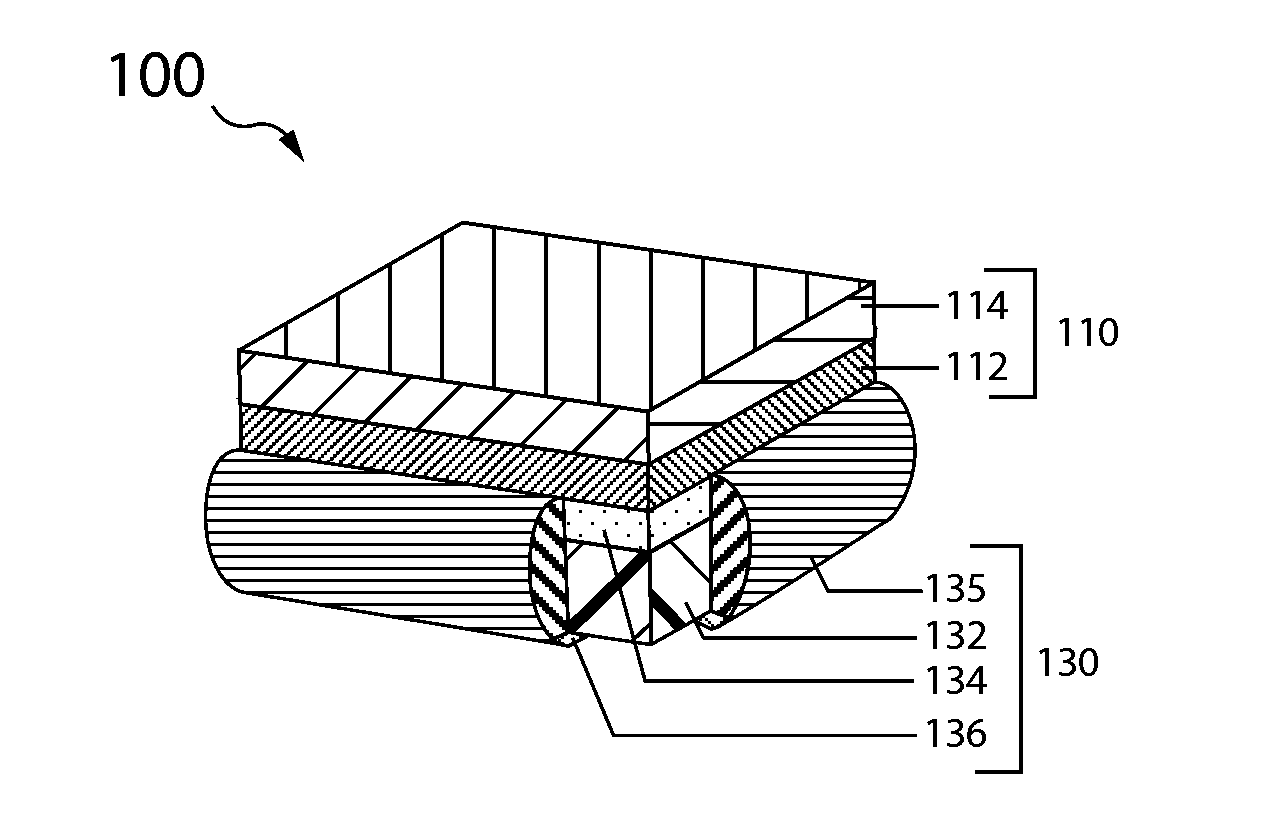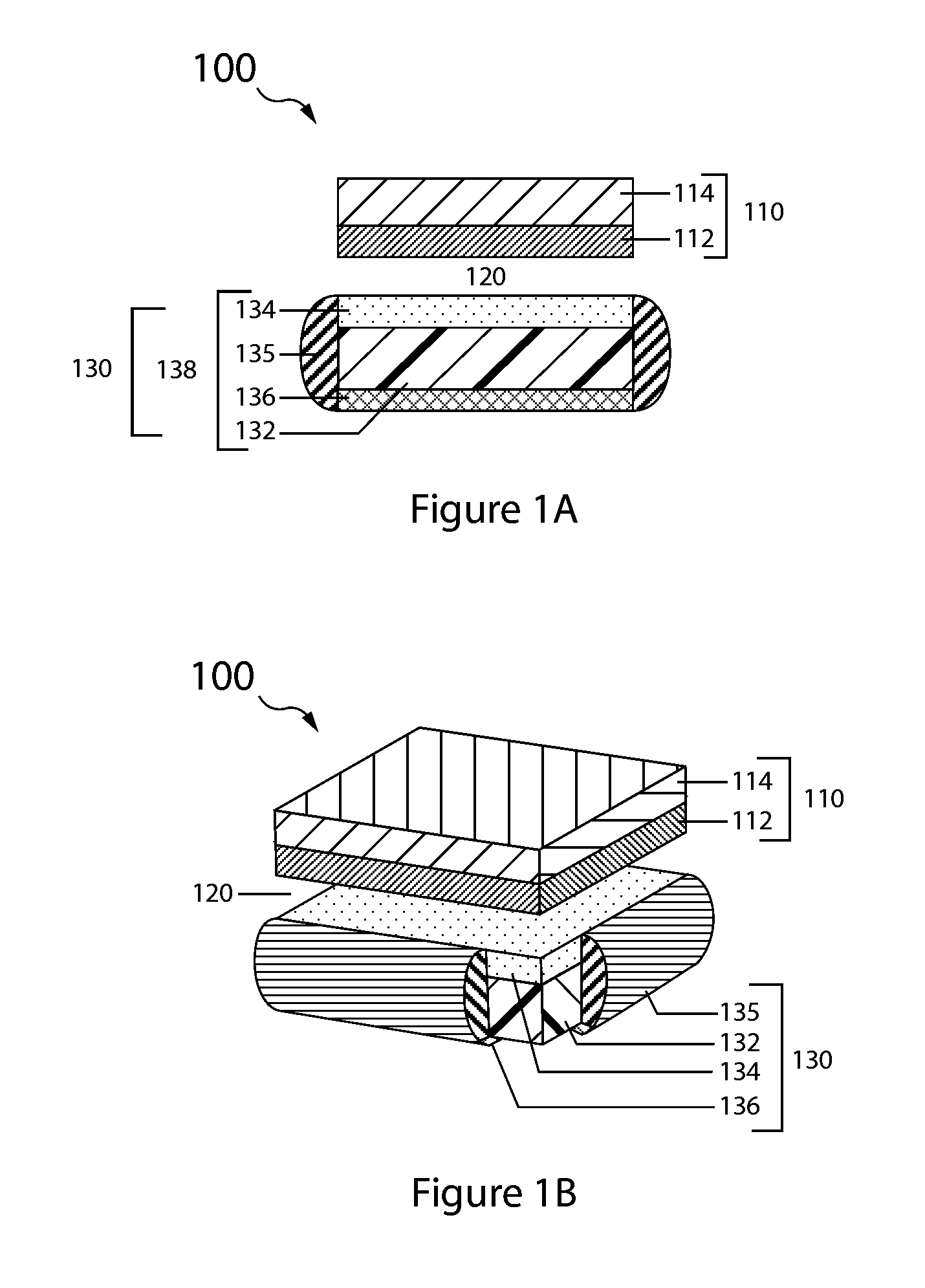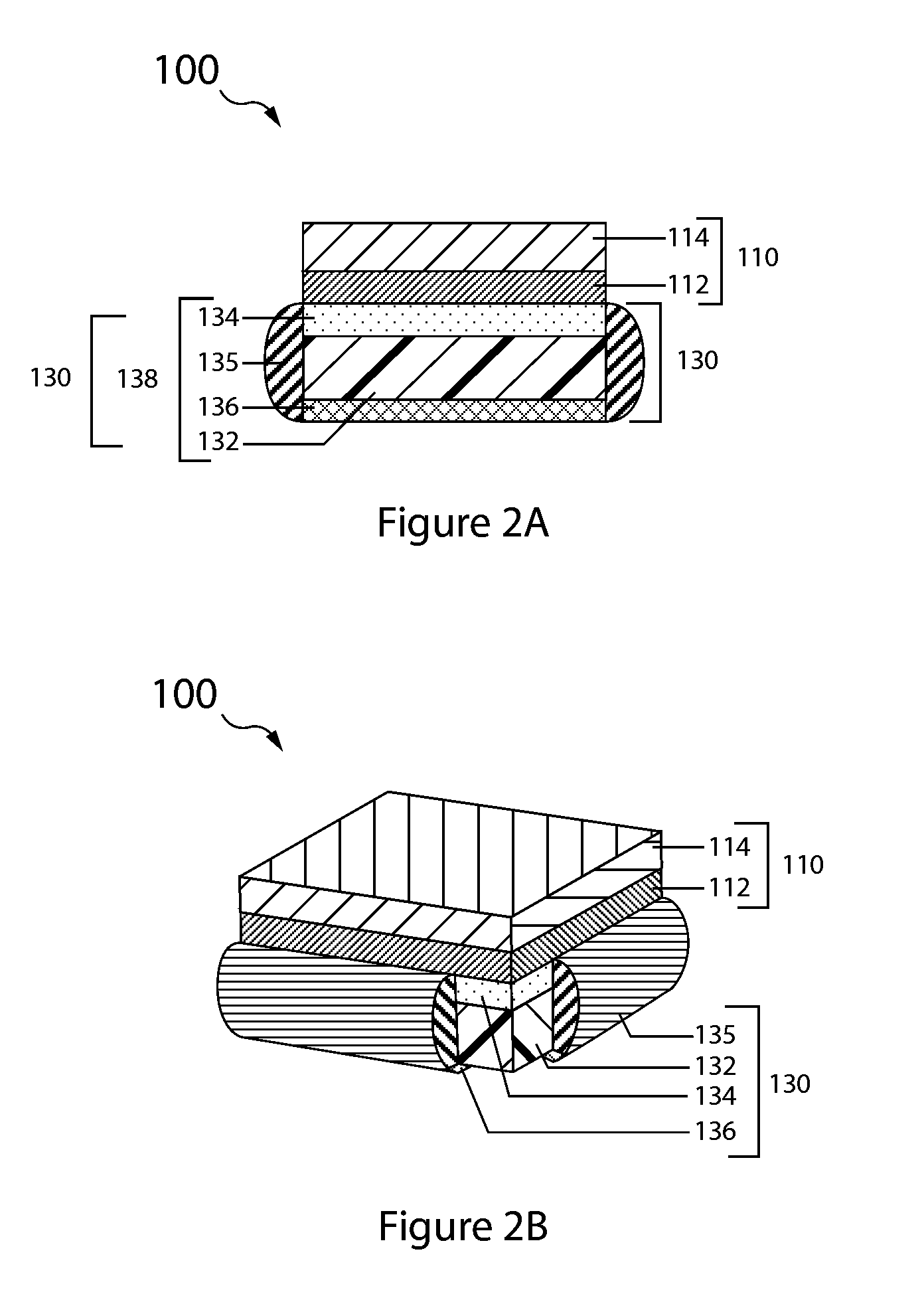High rate seawater activated lithium battery cells bi-polar protected electrodes and multi-cell stacks
a lithium battery, high-rate technology, applied in the direction of flat cell grouping, secondary cell details, sustainable manufacturing/processing, etc., can solve the problems of lithium metal in direct contact with seawater, high toxicity of thionyl chloride cells, and inability to meet the requirements of lithium metal, etc., to reduce the rate of cell activation, the effect of boosting conductivity and lessening the rate of ion exchang
- Summary
- Abstract
- Description
- Claims
- Application Information
AI Technical Summary
Benefits of technology
Problems solved by technology
Method used
Image
Examples
embodiment 130
[0081]The anode layer has two opposing surfaces, a first active surface and a second surface. In the double-sided anode embodiment 330 the second surface is active and in the single sided embodiment 130 it is inactive.
[0082]The anode layer 132 is sandwiched between the protective membrane architecture 134 and the anode backplane 136, with the first active surface of the anode layer (e.g., lithium metal foil) opposing, typically in direct contact, the interior surface of the protective membrane architecture, and the anode layer second surface opposing the interior backplane surface.
[0083]A seal structure 135 interfacing with the protective membrane architecture and anode backplane seals the anode layer in an anode compartment, and thus forms the anode enclosure 138.
[0084]With reference to FIG. 3B, the protected anode 330 is double sided and the anode backplane 134 is a second protective membrane architecture arranged in like manner to that of the first protective membrane and therefo...
fourth embodiment
[0101]The composite should have an inherently high ionic conductivity. In general, the ionic conductivity of the composite is at least 10−7 S / cm, generally at least about 10−6 to 10−5 S / cm, and may be as high as 10−4 to 10−3 S / cm or higher. The thickness of the first precursor material layer should be enough to prevent contact between the second material layer and adjacent materials or layers, in particular, the active metal of the anode. For example, the first material layer for the solid state membranes can have a thickness of about 0.1 to 5 microns; 0.2 to 1 micron; or about 0.25 micron. Suitable thickness for the anolyte interlayer of the fourth embodiment range from 5 microns to 50 microns, for example a typical thickness of Celgard is 25 microns.
[0102]The thickness of the second material layer is preferably about 0.1 to 1000 microns, or, where the ionic conductivity of the second material layer is about 10−7 S / cm, about 0.25 to 1 micron, or, where the ionic conductivity of the...
PUM
 Login to View More
Login to View More Abstract
Description
Claims
Application Information
 Login to View More
Login to View More - R&D
- Intellectual Property
- Life Sciences
- Materials
- Tech Scout
- Unparalleled Data Quality
- Higher Quality Content
- 60% Fewer Hallucinations
Browse by: Latest US Patents, China's latest patents, Technical Efficacy Thesaurus, Application Domain, Technology Topic, Popular Technical Reports.
© 2025 PatSnap. All rights reserved.Legal|Privacy policy|Modern Slavery Act Transparency Statement|Sitemap|About US| Contact US: help@patsnap.com



